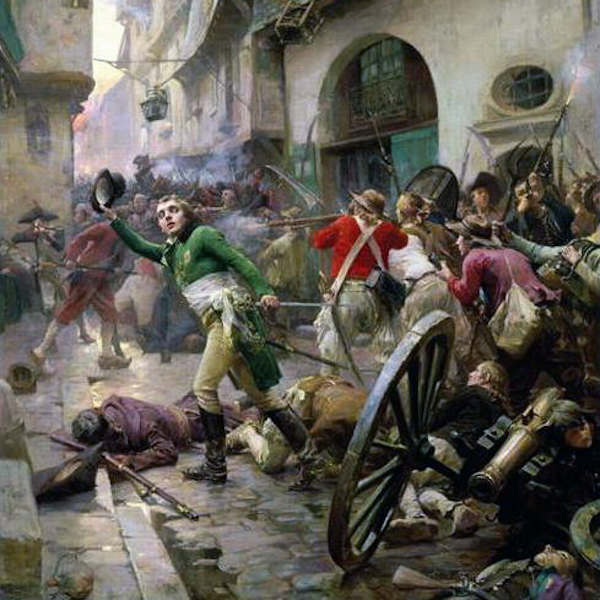DNA spotlight
Revolutionary France

Louis XVI was the last king of France before the monarchy fell during the French Revolution. His reign began with attempts to reform the French government according to ideas of the Enlightenment - including efforts such as removing land taxes, abolishing serfdom and increased tolerance for non-Catholics. French nobility opposed the implementation of thse reforms. Louis was able to implement changes regarding deregulation of the grain market, but this resulted in increased bread prices which combined with periods of bad harvests led to unrest. His support for the North American colonists seeking independence from Great Britain led to a financial crisis and further debt. France's middle and lower classes became discontent and angry towards the monarchy. This led to the storming of the Bastille and the start of the French Revolution. News spread quickly throughout France and popular sovereignty took hold with a complete disregard for claims of royal authority.

On 10 August 1792, armed revolutionaries stormed the Tuileries Palace which was defended by Swiss guards forcing Louis to seek shelter with the suspended Legislative Assembly - Louis was placed under a strong guard. A few weeks later on 20. September the Battle of Valmy proved to be a key turning point where the army of France defeated Prussian troops as they attempted to march on Paris. The new French government gained a huge psychological victory and this was a vindication for the French revolutionaries. The National Convention declared the end of the monarchy and established the First French Republic. In January 1793, Louis was executed. This combined with anti-clerical policies led to the Revolt in the Vendee, a counter-revolution which is considered to be the first modern genocide. Monarchists and Catholics took up arms against the French Republic.

The French Royalist Forces (Catholic and Royal Army) were the royalist armies in western France composed of insurgents who opposed the French revolution. During 1793 the War in the Vendée was a counter-revolution which began with youths killing the commander of the National Guard. Violence spread and several hundred pro-Revolutionary citizens were massacred. The Republic responded quickly by sending 45,000 troops to try and stop the violence. Insurgents seized several towns including Fontenay-le-Comte and Saumur as well as captured massive supplies of arms and cannons. In response, the Republican army began a scorched earth policy destroying farms, burning forests, razing villages and massacring 20,000 to 50,000 Vendean civilians. Meanwhile Marie Antoinette was executed and the next day the insurgents suffered their first defeat at the Battle of Cholet.

The Battle of Le Mans took place on the 12 and 13 December 1793. The Catholic and Royal Army numbered less than 20,000 men and was trailed by thousands of wounded, women and children. They suffered from cold and famine and were ravaged by disease desperate to obtain supplies. After capturing Le Mans on 10 December, they spread out around the city to collect provisions. Two days later, the Republican troops under Francois-Joseph Westermann and Francois Muller arrived at the gates of the city. They camped outside and waited for their full forces of 20,000 men to arrive. Attacking by nightfall, they overhwhelmed the insurgents and only lost 30 men compared to the 15,000 dead on the other side. Our samples are from this battle - among the bodies are Louis XV silver crown coins, emblems of the 12th regiment dragoons, and small gold crosses. The samples are all males between the ages of 20 and 40 years old, likely all soldiers who died in the fighting.
Sample: Le Mans Revolutionary France
- Sample ID: LM_213_T
- Year: 1793 AD
- Sex: Male
- Location: 47.9758,0.1518
Sample: Le Mans Revolutionary France
- Sample ID: LM_306_T
- Year: 1793 AD
- Sex: Male
- Location: 47.9758,0.1518
Sample: Le Mans Revolutionary France
- Sample ID: LM_403_T
- Year: 1793 AD
- Sex: Male
- Location: 47.9758,0.1518
Sample: Le Mans Revolutionary France
- Sample ID: LM_406_T
- Year: 1793 AD
- Sex: Male
- Location: 47.9758,0.1518
Sample: Le Mans Revolutionary France
- Sample ID: LM_913_T
- Year: 1793 AD
- Sex: Male
- Location: 47.9758,0.1518
